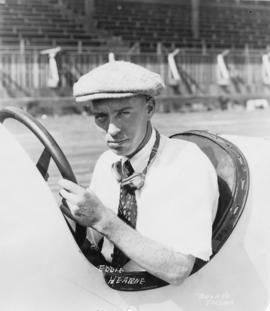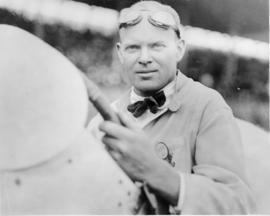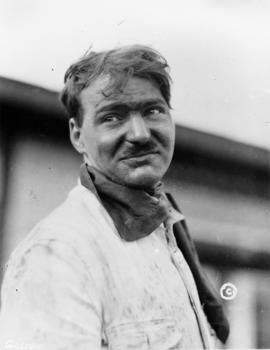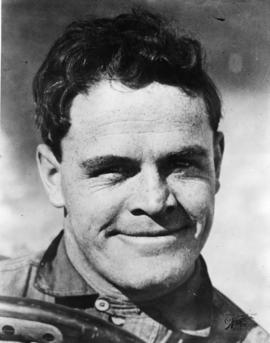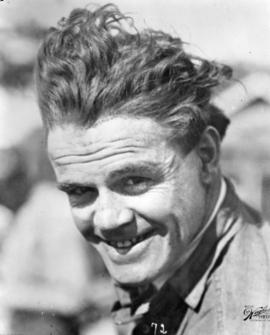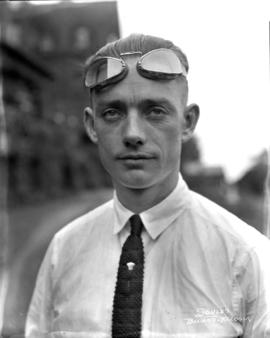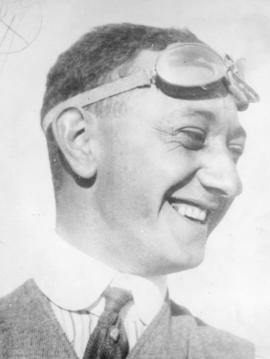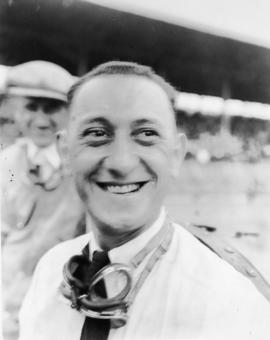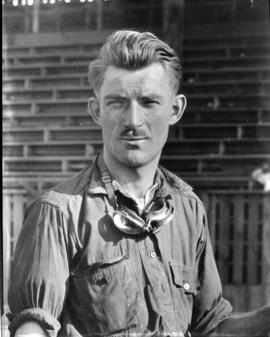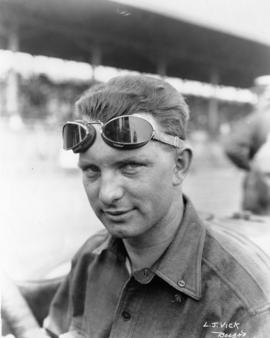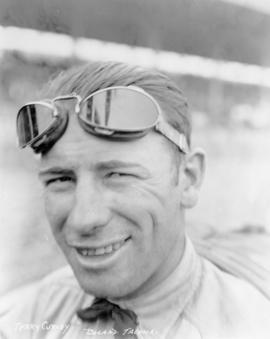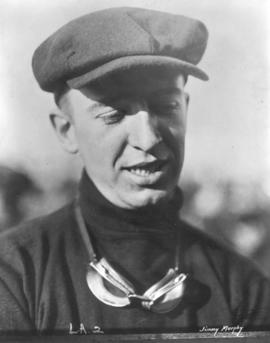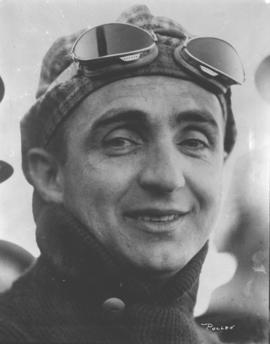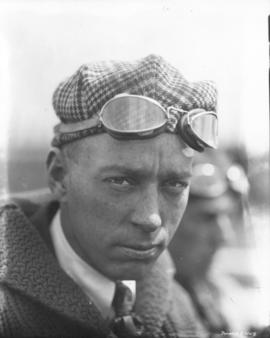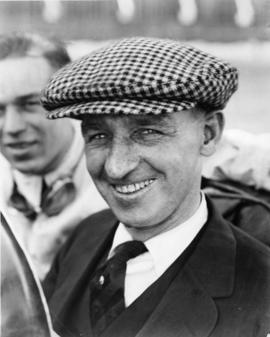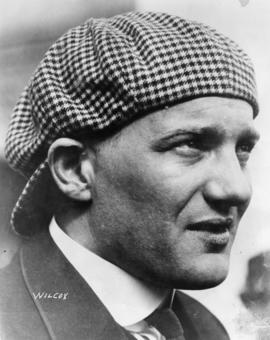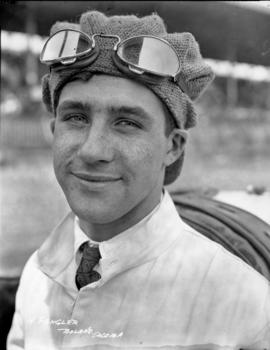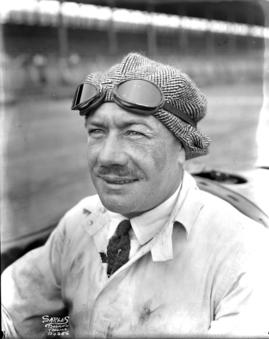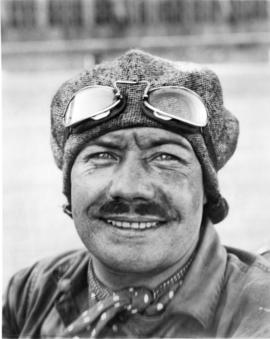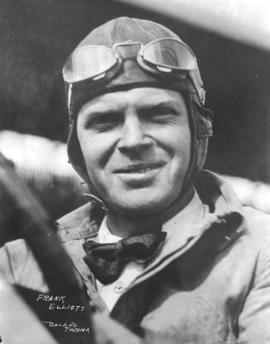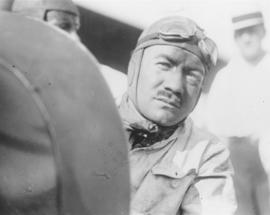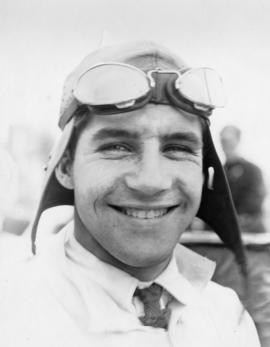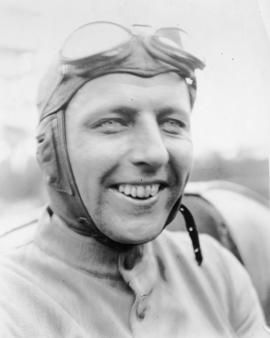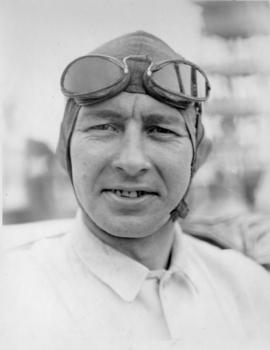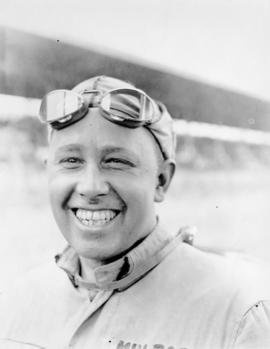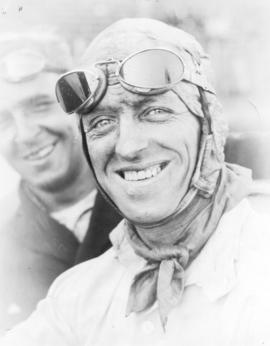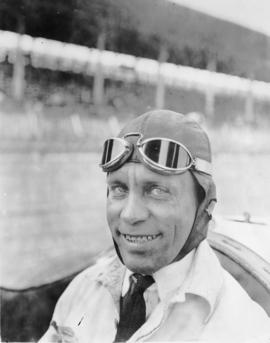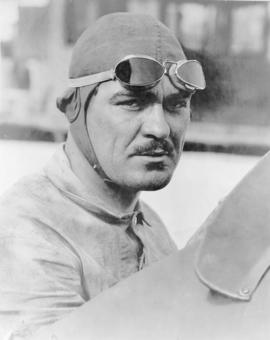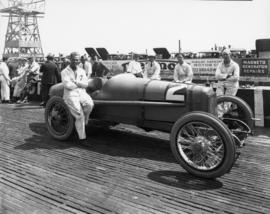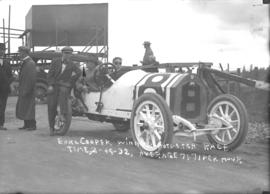- Item
- 1920-07
Part of Marvin Boland Photographs
Eddie Hearne poses in his Revere at the Tacoma Speedway in July of 1920. Hearne was in town for the 9th annual Speedway Classic held on July 5th. Hearne was a veteran racer, having started as an amateur in 1907. He was born March 1, 1887, the son of privileged parents. He graduated from Chicago University and entered the automobile business as one of the first Hupmobile dealers in Chicago. He started out racing his own cars as an amateur. In 1909, the same year the Indianapolis Speedway opened, he won the Amateur Championship of America. He soon turned professional, driving for the German Blitzen Benz, as well as other makers. His best year in racing was in 1923 when he was crowned the National Champion. He is #23 on the all time top 40 auto race winners, with 11 career wins. He died February 9, 1955. (TDL 7/2/1920, pg. 1C; 7/3/1921, pg. C-3; www.formulaone) Speedway 098
Tacoma Speedway (Lakewood); Racetracks--Lakewood--1920-1930; Automobile racing--Lakewood--1920-1930; Hearne, Eddie; Automobile racing drivers;
